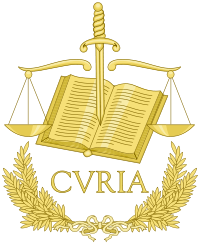Blogposts
The Unity of Law 3: A step towards a definition and instruments that can optimize the unity of law
Rolf Ortlep Introduction
Introduction
In my previous blog I gave a modest impetus to define the concept of ‘the unity of law’ and I have discussed a number of instruments which in any case (also) aim to optimize the unity of law. The following four instruments are distinguished: institutional reform, preliminary ruling procedure, coordination and a differentiated discursive substantiation requirement. The first instrument was discussed in my previous blog. I will now discuss the other three instruments.
Instruments to optimise the unity of law
Preliminary ruling procedure
The preliminary ruling procedure of the Court of Justice of the European Union (CJEU) has traditionally been the instrument to ensure that national courts do not interpret EU law differently. The national judge as a European Union judge in primo has the competence under article 267 TFEU and has at the highest instance, meaning a national court or tribunal against whose decisions there is no judicial remedy under national law, obliged to bring the preliminary question to the CJEU when it concerns the interpretation of EU law. The obligation to refer for the highest national courts does not apply, on the ground of the CILFIT-doctrine, if it is an acte éclairé or a acte clair. A acte éclairé is the situation in which the CJEU has already ruled on a question, whether or not in the framework of the same national case. When the correct application of EU law is so clear that there can be no reasonable doubt about the answer to the question, then it is an acte clair.
Recently a question raised in the case law of the CJEU is whether a difference of opinion over the same EU issue between the (highest) national judge and a (foreign) government, a lower national court of the same Member State, or a judicial instance of another Member State is an important indication that it is not an acte clair? It must also be taken into account that the European Union is now made up of more than 28 jurisdictions, 24 official languages and with ever broader areas of competence. In light of this, Advocate General Wahl recently defended that the chance that a real acte clair occurs is at best as great as the chance of meeting a unicorn. Therefore, it is not entirely surprising that at the CJEU and European Court of Human Rights proceedings are regularly conducted due to alleged failures to comply with the obligation to refer of article 267 TFEU respectively, the alleged failure to give reasons for why the obligation to refer was waived.
The question that arises in view of the above is whether the preliminary ruling procedure is still an adequate instrument to ensure that the national courts do not interpret EU law differently? What is exactly the scope of the – European law – duty of justification when the request for a preliminary question is rejected? Is it not more effective, in order to optimize the unity of law, to put more emphasis on ‘real’ horizontal cooperation between the national courts and the CJEU, so that in preliminary orders for reference there is regular synchronization with decisions of the highest foreign courts and that on different levels experiences and case law are shared between the highest national courts? With regard to that synchronization a step further can be made by advocating a principle of comparative justification in preliminary orders for reference.
While at the level of the CJEU concerns are increasingly placed on the current preliminary ruling procedure, at the national level similar procedures are increasingly in the spotlight. The Wet versterking cassatierechtspraak (Cassation Proceedings (Further Measures) Act) introduced article 81a of the Judiciary (Organization) Act (Wet RO) on the 1st of July 2012. This preliminary ruling procedure contributes, according to the legislature, to the timely answering of important questions of law and to an optimal fulfilment of the law-making task of the Supreme Court (civil division) in cases in which large societal interests are involved and this improves the unity of law (in the sense of reducing the risk that lower courts make contradictory decisions in identical individual cases). The preliminary ruling procedure has recently been extended to include tax law (as from January 1, 2016) and it is being debated whether the expansion should also include criminal and administrative law in order to promote the development and the unity of law.
Currently, in the administrative courts a different type of preliminary ruling procedure is also discussed, the discussion about a preliminary ruling procedure between the highest national courts. In my previous blog the government proposal to abolish the Central Appeals Tribunal and the Trade and Industry Appeals Tribunal was mentioned: the jurisdiction of the former court goes to the courts of appeal and the jurisdiction of the latter court to the Administrative Division of the Council of State. If this government proposal passes, then the institutional structure of the administrative courts will consist of two supreme administrative courts: the Supreme Court and the Administrative Division of the Council of State. In the framework of this government proposal the House of Representatives adopted a motion of the members Recourt and Taverne on the 30th of April 2015. This motion calls on the government to include an institutional unity of law provision which provides that the Administrative Division should ask questions in a preliminary ruling procedure to the Supreme Court if a pending case includes a question of law that, from the perspective of the unity of law, requires an answer. Late last year it was announced that a government commission will consider this proposal.
Coordination/synchronization
The unity of law traditionally concerns coordination/synchronization, for example by informal judicial consultation, the establishment of judicial (policy)rules for example in rules of procedure, referring toe each other’s case law and by allowing members of the highest courts to work as a deputy on cases in one of the other courts.
Informal judicial consultation faces the question of transparency/openness. Classic in this respect is the case of Borgers. Given, inter alia, the article 6 ECHR principles of due process, particularly the principle of transparency, one should question a decision in a specific individual case came about after an informal judicial consultation between two or more courts, a consultation that is not known nor controllable for the parties and on which they can exert no influence. In his ‘Bloging about the unity of law?’ Prof. dr. Eddy Bauw further examined the legitimacy and the binding force of the collegiate agreements between judges (so-called judge made rules), such as about maintenance standards, the subdistrict court formula for severance payments and the sentencing orientation points and has, in that context, raised the question whether the court is not entering into the area of the legislature and whether judges are sufficiently equipped to establish standards. Linked to these is the question whether it is actually good to leave the unity of law at the discretion of the self-regulating capacity of the courts involved, because a democratically legitimized foundation is missing.
Also with regard to the case law of the CJEU and the ECtHR coordination/synchronization is important. Of increasing value for legal practice is the Charter of Fundamental Rights of the European Union. With the entry into force of the Lisbon Treaty, the EU Charter has been given the same legal value as the Treaties under article 6 TEU. This Charter is a confirmation of the fundamental rights guaranteed by the ECHR and the fundamental freedoms and rights deriving from the constitutional traditions common to the Member States. An interaction and mutual influence exists between the ECHR and EU law. A question that can be raised is how this interaction and mutual influence has taken shape and to what extent this could be improved.
Differentiated discursive substantiation requirement
Among the instruments that can help to optimize the unity of law, the instrument of a differentiated discursive substantiation requirement is a separate category, in the sense that it concerns the core of daily judicial work. In my previous blog, the importance of the justification of a decision in relation to the unity or the legitimate diversity of law was expressed. Upon the assumption that the issue of legal unity is a problem of argumentation, the question can be asked whether the reassessment of the attractiveness of judicial decisions is an effective instrument to optimize the unity of law? The term ‘attractiveness’ means the power to gain consensus according to societal views with a court decision. Hereby, the relationship, as mentioned in my previous blog, between the the concept of the unity of law and the concept of legal development come into play.
Developing the law into a solution that is as societally satisfactory as possible is not restricted to the democratically elected legislature, but is also the task of the judge. The explicit recognition of the latter by the court in its decision paves the way to openly justifying that decision, when the importance of the development of law or the promotion of the unity of law requires it, more extensively and, especially, in a discursive manner. By justifying a judicial decision in this manner, and thus for example explaining why a trend in the case law of another (higher) court is not followed, such a decision gains attractiveness and thereby provides more stability to reach and/or perpetuate the unity of law between the (highest) courts. Substantiating judicial decision in the manner just mentioned can in addition highlight why – in a particular topic – there is a difference in case law between the highest courts, which can have as a result that consensus arises in the matter that – in a particular topic – there is no unity of law between the courts, but ‘simply’ a legitimate diversity.
A differentiated discursive substantiation requirement is also in line with the development to make the judiciary more transparent for society. In the 2013 manual of the Scientific Council for Government Policy, titled: Speel- ruimte voor transparantere rechtspraak (Room to manoeuvre for a more transparent judiciary), a distinction is made in this regard between openness, comprehensibility and criticizability. The fact that the judge has a law-making task and also uses it clearly requires, according to the report, inter alia, that in cases of judicial law-making the arguments for and against the choice made are stated in the justification to give society more information to be able to understand, accept or criticize. In order to optimize the development and unity of law in that framework, one can also think about the introduction of dissenting – and concurring – opinions, as it exists at the European Court of Human Rights, or about strengthening the position of the Advocate General in, for example, administrative law.
Conclusion
In these blogs I have given a modest impetus to define the concept of the ‘unity of law’ and to discuss a number of instruments and research focuses that could optimise the unity of law. Certainly not as a final piece, but as an invitation to start a discussion – whether or not in a follow-up blog. Another way in which I will do that is by getting in contact with a number of colleagues through a paper which I will write. I hope that everyone feels free to, also on their own initiative, exchange ideas with me (r.ortlep@uu.nl) and to join our ‘unity of law train’. With regards to the blogs on this topic, it is now time for someone else.


